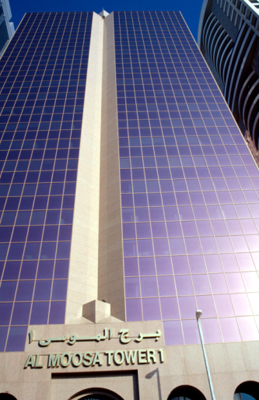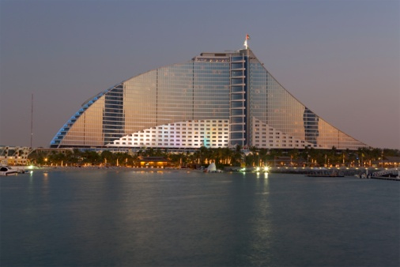Dec 22, 2025
Dec 22, 2025
Particularly in the last few decades, Architectural language has given more importance to the ‘transparency’ and ‘lightness’ of building spaces- driving the world towards a flattering glazed built environment.
 The question I then pose is this; to what extent fully glazed buildings, in particular the ones that claim to be ‘green’ and ‘sustainable’, are actually concerned about the environment?
The question I then pose is this; to what extent fully glazed buildings, in particular the ones that claim to be ‘green’ and ‘sustainable’, are actually concerned about the environment?
Glazed facades were initially possible only due to the development of powerful cooling systems; otherwise these buildings would have been inhabitable, especially in regions such as the Middle East. Forgive me for not elaborating on the enormous amount of energy required to run the air-conditioning to compensate for the added heat loads through glass. A building enveloped with glass acts like a solar cooker. Remember, that the property of glass is to allow in heat (short waves) and not allow reflected heat (long waves) back out. For this very property, Glass has been used in the western world (cold regions) to allow passive solar heating. In this part of the world, where methods of keeping the heat out and preventing its transfer are required, architects instead celebrate with glass.
Architects have freed themselves from any kind of environmental constraint in the design of glazing and consider the engineering body of men to assume responsibility for maintaining the internal conditions desired for habitation. Ferraris are beautiful cars- a perfect balance between beauty and technology, but do not claim to be ecological or environmental friendly while they are sold. The same analogy – some glass facades are outstanding in terms of beauty and innovation, but we need to think twice before calling them environmentally friendly.
 I wonder why Glass is considered to be a material that symbolises ‘progress’ in the Middle East whereas traditional and practical materials like mud, clay, limestone are often related to concepts of backwardness and poverty. This impractical dissociation between materials and the environmental context of a region causes a slow degradation of the architectural expression prevalent in the Islamic world. Even the local builders often ignore simple concepts of how they can make their lives more comfortable within a living space. Consider the circumstances of walking out at midday. The first move of ours is to place our hands in a natural but strategic way above our eyes to cut off the direct harsh sunlight and reflected heat from the hard landscape we walk on. Our eye is the only transparent part of our body and the most fragile. We take measures to protect it. Glass in the similar manner, is the most transparent and fragile part of any building. Why don’t we protect it and shade it from the sun in the similar manner?
I wonder why Glass is considered to be a material that symbolises ‘progress’ in the Middle East whereas traditional and practical materials like mud, clay, limestone are often related to concepts of backwardness and poverty. This impractical dissociation between materials and the environmental context of a region causes a slow degradation of the architectural expression prevalent in the Islamic world. Even the local builders often ignore simple concepts of how they can make their lives more comfortable within a living space. Consider the circumstances of walking out at midday. The first move of ours is to place our hands in a natural but strategic way above our eyes to cut off the direct harsh sunlight and reflected heat from the hard landscape we walk on. Our eye is the only transparent part of our body and the most fragile. We take measures to protect it. Glass in the similar manner, is the most transparent and fragile part of any building. Why don’t we protect it and shade it from the sun in the similar manner?
One can also imagine the amount of water, equipment and manpower required to just clean off all the settled dust on the thousands of square metres of glass and solar panels on all buildings in the Middle East! Nowadays, tenants spend a lot of money on the interior layouts, in order to cut down the harsh light and heat coming in through the huge pans of un-shaded exterior glass.
Some Architects have justified the use of glazing facades for ventilation purposes in the Middle East by their use of colourful sketches showing red and blue arrowed air movements. Unless properly analysed and calculated, these sketched arrows of air movements make no sense at all. Architects assume that laws of physics must obey architecture’s will, i.e, air will force itself magically through glass openings as sketched on paper. Glazing designs for ventilation purposes must be designed only after Stack and Coanda effects of air have been carefully studied and simulated through measured data in a particular built setting. There have been reports of Sick-building syndrome, where occurrences of unexpected buoyancy and reverse air movements have taken place.
I agree that the invention of Glass, after the fire; has been the most important technological innovation in mankind’s history. I would even attest to the fact that the Chinese lagged in scientific finding and advancement just because it was satisfied with its ceramic and clay – glass was not manufactured and found useful by the Chinese till much after the Egyptians and Mesopotamians. It drastically reduced their scientific enquiry; with the absence of microscopes, magnifiers, refractors, beakers, spectacles, tubes, mirrors etc.
Glass is indeed important - but we need to interpret its usage logically and with an understanding of ecological imperatives, especially in the building industry. The requirement for architecture to contribute to the social and environmental sustainability now charges architects with a responsibility that goes beyond a simple design brief. I call upon architects to avoid creating these unwanted Glass monsters, in terms of comfort and energy usage.
Beautiful; but Architects speak with their buildings, not with their words.
16-Aug-2010
More by : Romi Sebastian